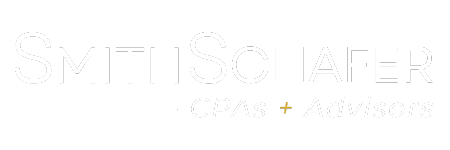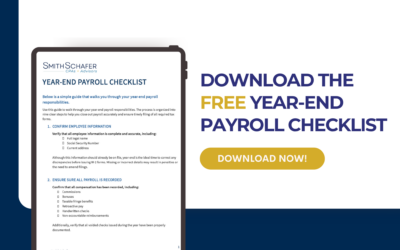How did tax season go? Whether this most recent tax season left Minnesota business owners feeling good or dreading the thought of what will happen next year, there’s good news. Summer is an excellent time for parties in both camps to reclaim and enact a new tax planning strategy.
How TO have a proactive tax planning strategy
A proactive approach to taxes goes beyond its direct impact on your tax payments. It can influence investment choices, purchasing decisions, savings strategies, and even the inclination toward philanthropy. Tax planning encompasses the evaluation of short- and long-term goals in relation to a company’s financial operations and the prevailing economic conditions. There exist numerous avenues to save money on taxes, with seemingly boundless paths leading to that outcome. In 2023, there are several strategic tax maneuvers available to business owners during the middle of the year, empowering them to effectively minimize their tax burden.
SELF-EMPLOYED TAX BREAKS
One of the easiest and smartest ways for business owners to reduce taxable income is to increase contributions to a pre-tax retirement plan. This can be done through the employer-sponsored 401(k), 403(b), or 457(b) plan or through a self-employed plan like a SEP, SIMPLE IRA or a Solo 401(k).
If a business doesn’t yet have a retirement plan, the IRS provides tax incentives for startup plans.
In 2023, the maximum retirement plan contributions are $22,500 for employer-sponsored plans or $6,500 for IRAs. Individuals over age 50 can make catch-up contributions of $7,500 per year to their 401(k) or $1,000 to an IRA.
Business owners aged 70 ½ can also use their IRA as a charitable gift. Qualified charitable distributions are tax-free, so individuals’ taxable income won’t increase. Up to $100,000 per individual can be used as a qualified charitable distribution.
Charitable giving is also an option in a year where the business owner would receive a large sum of money, from a bonus or other activity. In those tax years, a large charitable donation would result in a similarly large tax write-off. Some high-net-worth individuals utilize donor-advised funds (DAF) to make a large one-time donation; then, the DAF funds future charitable gifts.
The Qualified Business Income Deduction (QBID) can also be a powerful tax savings tool. Eligible self-employed individuals and pass-through small business owners can deduct up to 20 percent of qualified business income from taxes. Even if business owners don’t itemize taxes, they can still qualify, however this deduction is subject to income limitations.
In 2023, the temporary 100 percent business meals deduction is no longer in place. If the business purchases food or beverages from a restaurant the tax deduction is back to the usual 50 percent limit.
In general, business owners can reduce taxable income with eligible expenses. Beyond what’s discussed here, deductible expenses may also include advertising, contractor fees, utilities, rent and/or mortgage payments, tax preparation and legal services, home office, employing children, and more.
HEALTH SAVINGS ACCOUNT
For those with a high deductible health plan, health savings accounts (HSAs) offer a triple tax benefit: contributions are tax deductible, grow tax-free, and distributions are non-taxable if used for qualifying purposes. Money in an HSA, if left in the account, accrues interest and rolls over from year to year. Later, an HSA can be used in retirement. After age 65, there is no penalty for using HSA funds for non-medical purposes.
Small business owners could open an HSA through a bank or financial institution and may not need to go through a health insurance company at all.
2023 HSA contribution limits are $3,850 for individuals and $7,750 for family coverage. Individuals age 55 and older by the end of the year can make an extra $1,000 contribution.
LONG-TERM TAX PLANNING
Beyond the immediate tax breaks that the above tactics could generate, there are other ways to think about tax planning from a long-term perspective. A tax-efficient business is one that uses income, taxes, and deductions to its advantage. For example, year-round planning might indicate that accelerating income in one year would be more beneficial than deferring it, or vice versa, depending on the accounting method.
Entity selection is another long-term tax planning tool that many business owners may overlook. Especially in high-tax states, paying more tax as a business may be better than paying more as an individual. There is also the consideration of which business entity is the most appropriate if a sale or merger is on the horizon. Changing entity type takes time and planning, and it’s not a year-end decision. Modifying the accounting method may be another way to save on taxes, and again, realistically it’s something that can’t be done in December.
Meticulous, accurate, and timely bookkeeping goes a long way in helping business owners claim every tax incentive they’re entitled to. Documentation is key. When there’s quality data, business owners can make real-time, informed decisions about current needs and future forecasts.
CONTACT US
Mid-year tax planning is an essential activity to ensure the business is positioned to pay the least amount in taxes possible. However, to achieve this outcome means Minnesota businesses should start reviewing plans now. If you have questions about the information outlined above or need assistance with another tax or accounting issue, Smith Schafer can help. For additional information, contact us. We look forward to speaking with you soon.



